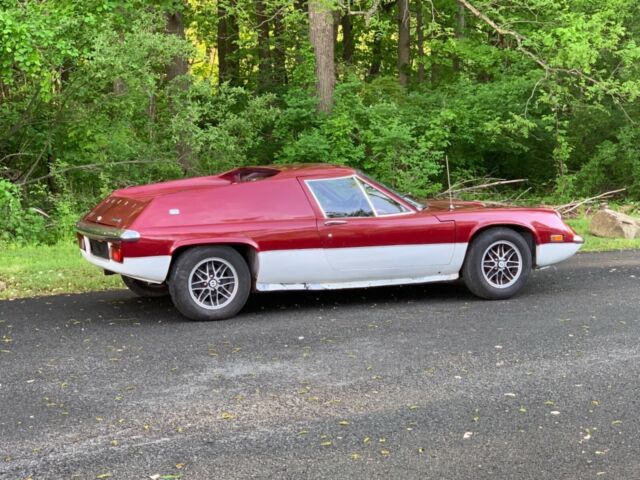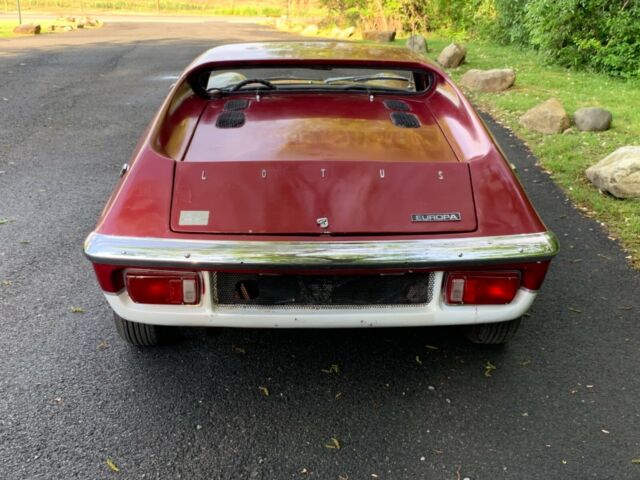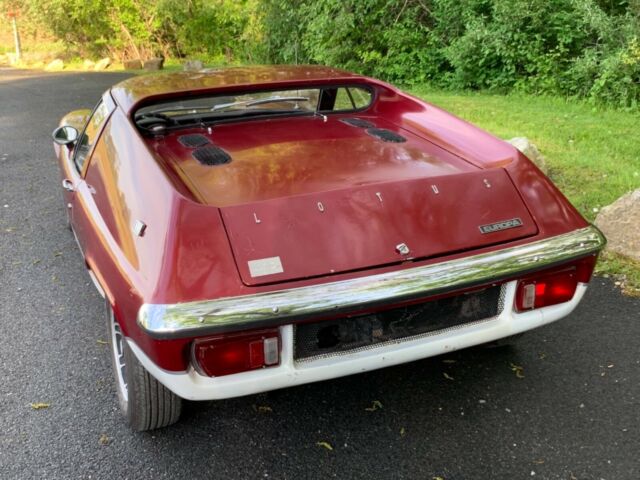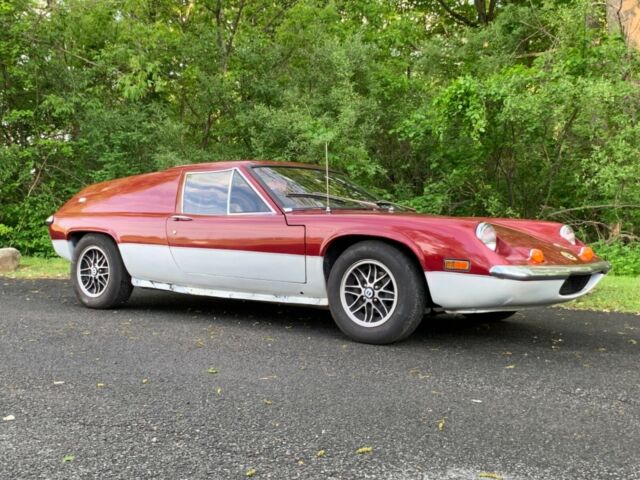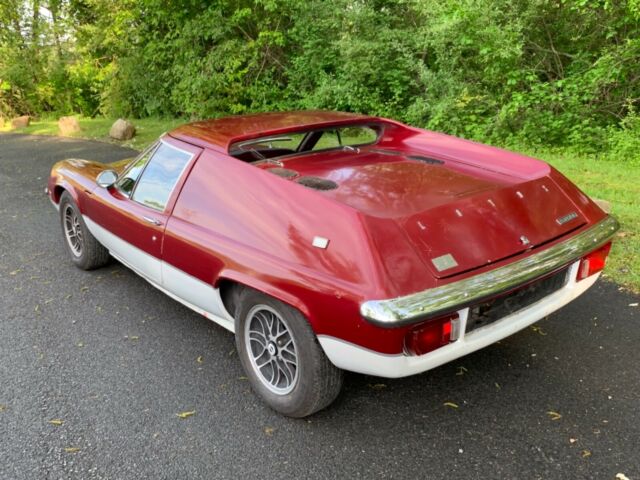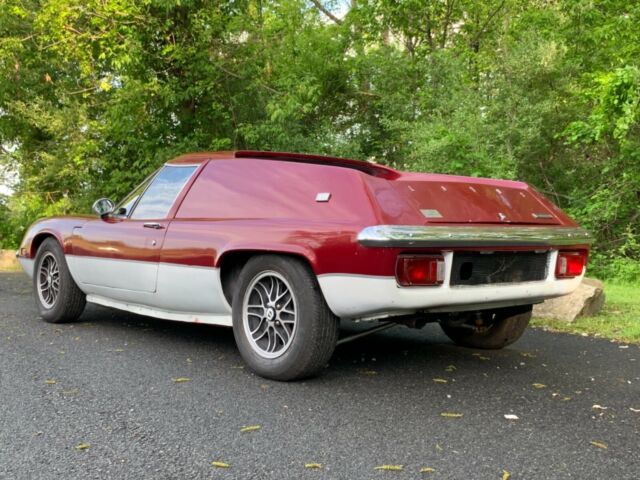1970 Lotus Europa S2 Type 65 Renault Engine Cosmic Wheels Excellent Driver!
Technical specifications of Lotus Europa 1970
| Price: | - |
|---|---|
| Item location: | Flanders, New Jersey, United States |
| Make: | Lotus |
| Model: | Europa |
| Type: | Coupe |
| Trim: | Type 65 |
| Year: | 1970 |
| Mileage: | 53926 |
| VIN: | 7006160400R |
| Color: | Red |
| Engine size: | 1565 cc |
| Fuel: | Gasoline |
| Transmission: | Manual |
| Interior color: | black |
| Vehicle Title: | Clear |
| You are interested? | Contact the seller! |
Description
1970 Lotus Europa S2 Type 65. 1,565 cc Renault engine. The car is an excellent driver. There are approximately $5,000 in receipts with the car. It is mechanically sound. It starts, runs and drives very good. The engine sounds great and and transmission shifts well. The chassis is great with no rust. Floors are very solid. The paint is cracked all around but nothing bad. You can drive the car for many years as is. The seats, dash and door panels are in mint shape. The wood is in great shape. Headliner is cracked in a few places. The glass is great all around. The brakes and suspension are great. All electrical work. The Cosmic wheels and tires are great.More pics (including interior, engine bay and floors/chassis) here:
https://www.ebayphotogallery.com/zdjecia/Galeria/10482260/1
The car is sold AS IS. No warranty.
Here is an excellent article on the evolution of the Europa, including specs:
https://www.netcarshow.com/lotus/1965-europa/
Here is an excellent The Europa S2, or Type 54, was introduced in April 1968. It used the same Renault engine as the Type 46, but offered a number of refinements, including electric windows, fully adjustable seats, a new interior, and a polished wooden facia for the dashboard. Per request of the automotive insurance industry, Lotus switched to bolt fasteners (instead of resin bonding) to attach body to frame. A red Type 54 Europa S2 was driven by co-star Linda Thorson in several 1968 episodes of The Avengers (TV series). A small number of Type 54s were modified to be "federalized", that is, made suitable for export to the United States.In 1969, the Type 65 aka S2 Federal was born, with additional changes to the body, chassis, and the powerplant to better comply with U.S. D.O.T. standards. Among the newer bits, the Renault engine was expanded to 1565 cc capacity over the previous 1470 cc. Road&Track Magazine tested the Federal S2 and recorded 0-60 mph in 9.6 seconds with a top speed of 116 mph (187 km/h). 3,615 S2s were produced.he Lotus Europa or Lotus Europe, a two door mid-engined GT coupé built by Lotus Cars from 1966 to 1975.
The original Lotus Europa used Lotus founder Colin Chapman's minimalist steel backbone chassis that was first used in the Lotus Elan, while also relying on its fibreglass moulded body for structural strength. The Europa was the first mass-produced mid-engine road car and was based on a prototype built to compete for Henry Ford II's contract to build a Le Mans race car in the early 1960s.
The Lotus Europa was designed and built to be an embodiment of Chapman's oft-stated philosophy of automotive design: "Simplify, then add lightness."
The 4-wheel independent suspension was typical of Chapman's thinking; the rear suspension consisted of two relatively large trailing arms, one lower locating link per side, and the axles were used as upper locating links; very similar to Formula racing car designs of that era. Aside from the doors, bonnet (hood), and trunk (boot), the body was cast as a single unit of fibreglass.
The car's handling prompted automotive writers to describe the Europa as the nearest thing to a Formula car for the road.
The Lotus Europa or Lotus Europe, a two door mid-engined GT coupé built by Lotus Cars from 1966 to 1975.
The original Lotus Europa used Lotus founder Colin Chapman's minimalist steel backbone chassis that was first used in the Lotus Elan, while also relying on its fibreglass moulded body for structural strength. The Europa was the first mass-produced mid-engine road car and was based on a prototype built to compete for Henry Ford II's contract to build a Le Mans race car in the early 1960s.
The Lotus Europa was designed and built to be an embodiment of Chapman's oft-stated philosophy of automotive design: "Simplify, then add lightness."
The 4-wheel independent suspension was typical of Chapman's thinking; the rear suspension consisted of two relatively large trailing arms, one lower locating link per side, and the axles were used as upper locating links; very similar to Formula racing car designs of that era. Aside from the doors, bonnet (hood), and trunk (boot), the body was cast as a single unit of fibreglass.
The car's handling prompted automotive writers to describe the Europa as the nearest thing to a Formula car for the road.


